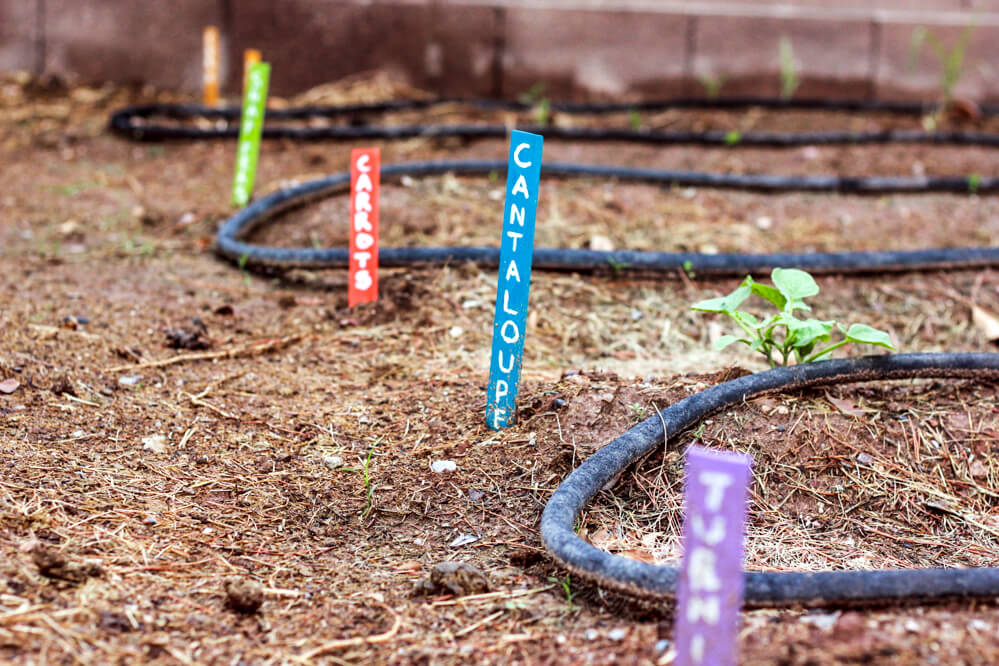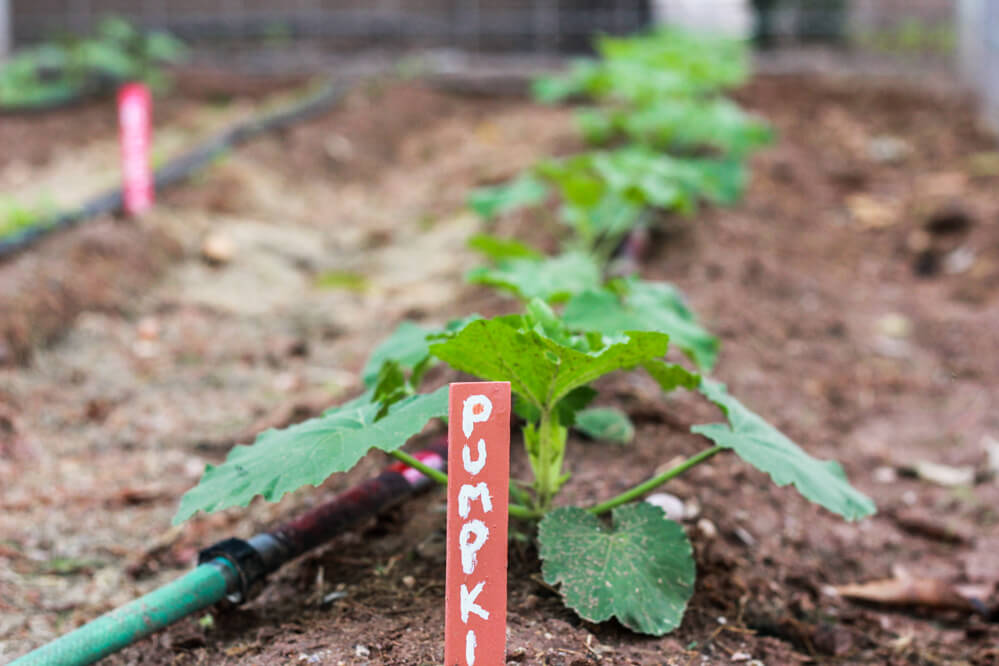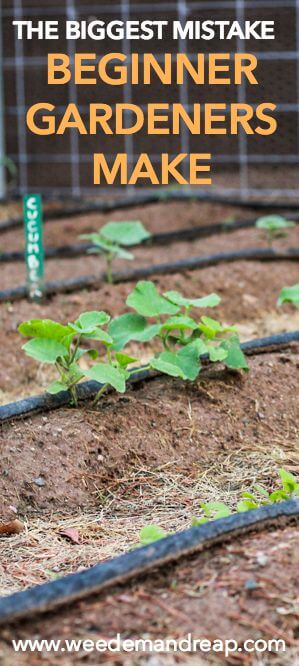You’ve got an idea, and boy, it’s a good one.
You want to be a gardener, and yes, it’s going to be awesome! You’re gonna grow squash, and corn, and big, juicy watermelons! You’re gonna grow tomatoes! And long rows of carrots! You’re even gonna grow some of that kale that tastes like feet. Oh yes, you are now a kale eater. Or at least you will be once you grow it.
You’ve got the plan down. You’re going to take a trip to the local nursery and stock up on lots of vegetable seeds and starter plants and soaker hoses! You’re going to get tons of bags of potting soil and compost to fill your cool new raised garden beds with, and SCREEEEEEEECH!
Wait a second, did I hear you correctly?
Did I hear you say ‘potting soil’?
Hmmm, looks like you and me are going to have to have a bit of a talk. If you want to have a successful garden, you’d better listen to somebody who’s done it wrong many a time. Gardening is tough, and let me tell you, you don’t want to go to all of that work just to have your garden fail.
The biggest mistake beginner gardeners make is…
They plant in ONLY potting soil or compost. This is a BIG no-no.
I get it. That black soil is so pretty. It’s all dark and light and fluffy. It makes you feel like a legit gardener, know what I mean?
The problem is, composted material is meant to only AMEND the soil, not be the SOLE soil. It’s meant to work with the soil and provide nutrients over time. I know it can be easy to think, “Well, if *some* compost is good, then *more* is better!” But actually, the opposite is true.
When you plant in ONLY composted material (a.k.a. potting soil or other bagged soil), you’ll have the following problems:
- When you water, you’ll notice that it doesn’t really soak in but spills off to the sides.
- After you water, you’ll notice the soil drains too quickly. That means that it’s soaking down into the ground before the roots have a chance to get a drink.
- You’ll notice after your seeds sprout, they’ll look really adorable, but won’t get any bigger than a couple inches. This is a result of the nutrients being locked up by the pieces of material or slivers of half-composted wood that’s taking all that nitrogen.
Wherever you live, be sure to follow this ONE IMPORTANT STEP.
It is VITAL that you remember that NATIVE SOIL is crucial to your garden’s success. The problem is, when you first start gardening, you’ll hear things like, “Oh, our soil here is too clay-like. Just horrible for gardening.” Or you’ll hear, “Oh, we have too sandy of a soil, it just drains too quickly”.
Don’t listen to any of that nonsense. They don’t know what they’re talking about. Don’t be hatin’ on your soil!
What you need to know (and always remember, and possibly tattoo somewhere on your body) is that there are REASONS why your native soil is the well, the way it is. Think about it. Think about the weather where you live. Is it dry where you live? That’s probably the reason why you have clay soil. Clay soil helps keep in moisture, which is critical to keeping plants alive. Is it humid where you live? That’s probably why you have sandy or loamy soil. Sandy soil helps drain more quickly, preventing the roots from rotting.
So, what should you do when prepping your soil?
You should always, always, always, AMEND the soil. It really helps if you can get the soil thriving before you plant. There are lots of different things to mix in with your soil before planting, and honestly, they’re all good and really just personal preference. Composted material is GREAT if you’re wanting to plant in the next few weeks. If you have a few months to spare, then something as simple as cow/horse/chicken/goat/sheep manure is great. At first, this manure has too much nitrogen in it to plant in, but if you mix it with your native soil, and let it chill for a few months, it’ll compost down on it’s own, leaving you with a perfect place to plant.
Simple, right?
It really is! SO many people assume that they need to plant in a completely different soil than their native environment, but really, you’ve got half of the solution right in your back yard. All it needs is a little help, and you’ll have the perfect place to plant. So whether you’re planting directly in the soil, using some cool raised garden boxes, or you are planting in pots on your porch, heed my advice and you’ll have a lush garden every time.




Thanks DaNelle for the advice! I think your tips are really going to help our gardens!
Happy New Year!
Hello I followed your soil advice last year and had a very successful garden and for that I am so thankful that I discovered your site. I do want to know if you recommend doing the same layering of products each year? I have bought the coconut coir, the fish emulsion and vermiculite and soil again this year but wonder if this is needed or perhaps topping up every other year? I do start my seeds indoors and this year in particular because it still feels like summer will never arrive, I may be a little late in getting the seeds outdoors. Should I be tilling the garden now, even though not ready to put small plants in beds yet?
Hi Debra-
So glad you had a successful garden!
It depends a lot on what you planted last year, what you plan to plant this year, and how depleted your soil is. It’s best to have your soil tested to know what nutrients it may be deficient in, too high in, or have adequate amounts of. Your local county extension office and Master Gardeners can help with this.
Best of luck on your garden this year!
Thank you -Bobbi (DaNelle’s Assistant)
We bought a foreclosed house with a defunct in ground pool. Filling it in over the years led me to discover the joy of purchasing fill dirt versus top soil for the last layers. Now it is a nice lawn area and future garden.
I’m so happy to find your website! I just moved to the phoenix area this year from Eastern Washington where I was an avid gardener and farmer, and homeschooler. I am trying to learn how to do it here and also how to work with this flood irrigating which is a new thing! so this week I plan to put up my first raised bed and try a fall garden. I have so many questions about how to grow things here that I am sure I will be spending a lot of time on your website! If you offered tours, I would love to come visit.
We’re hoping to do tours in the spring!
I started new beds this year right on top of the grass, starting with wet cardboard, a layer of compost, and a layer of native topsoil. For the first time in my decade-long history of failed gardening attempts, my plants are nearly all surviving (except a few blighted plants i had to pull out), but few are exactly thriving. Maybe I should have mixed the layers more? Or deeper layers (only avg 4″ over cardboard)? Or maybe it just needed some mulch and fertilizer? Greening my thumbs has sure been taking a lot of trial & error!
New soil isn’t quite full of nutrients yet. I guarantee you as you keep going, each season will get better and your plants will thrive!
Not sure what’s in my soil… round up, moss killer ect I don’t trust it since the previous owners left a bunch of toxic lawn and garden chemicals in the shed
Enjoy your website, lots of good info. Would like to grow wormwood, any tips or suggestions, best place to buy seed? I live in the north east zone six thank you.
I’ve never grown wormwood, so I’m afraid I’m not qualified to give advice:)
Hi!! I just built 6 4×4 raised beds, and added soil today. I’m a little nervous now that I didn’t add enough proper nutrients to the soil. I just put the organic raised bed potting mix I found at the store. I also already planted my basil and tomatoes in the beds today. What do I do!!??!!
P.S. You are a brilliant gardener 🙂
Thanks, Natalie! With regard to nutrients, you should be fine as long as you add in the top 2-3 inches or around the base of the plant!
That’s a shrewd answer to a tricky qustieon
I just recently came to the same conclusion. I’ve done the “Square Foot Gardening” thing, and although I think Mr. Bartholomew has some great ideas, I’ve come to the conclusion that raised beds and the 100% fresh mixed planting soil (1/3 peat moss, 1/3 vermiculite, 1/3 compost) is not that great an idea. The raised beds may look cool, but they drain away the goodies in your soil too easily, and dry out too quickly.
I didn’t use his exact recipe for the soil (I didn’t want to have to pay for that much peat moss and vermiculite), but I had a good mix including a bunch of old cow manure from a barn. At the first rain, I saw all this black water running out from my planting beds and down my driveway. Bye bye nutrients!
I am switching over to an “in-ground” garden next spring. I think his idea of planting at the final spacing is a good idea, so I will plant in a cross between square-foot and rows because of the more efficient use of space. Probably rows made up of 3 squares wide. We’ll see how it works.
Thanks for posting this. I feel validated now!
YES! Absolutely! I had the exact same problem when I tried that.
Native soil is not just a function of climate but also topography. The area around me is an example upland areas tend to be more clay while areas down by the river can be silty or even sandy (depending on River history and flow). So interpting conditions off just climate alone could be misleading.
Thanks DaNelle! I have been really wanting to do more planting in our new yard but don’t know where to begin! I totally was in the camp of “our soil sucks” so i’m glad I read this! I need to do some composting!!
I live in Las Vegas. If I were to start a container garden with out a yard to dig soil from, would my local nursery carry local dirt that I can mix with potting soil/compost or do I need compromise with other bagged ingredients? I know you don’t know specifically about my local nursery but in general do they do that sort of thing? Lastly, if I do need to go all bag ingredients, any recommendations?
They should, yes! Or you can go to a friend’s house and fill some bags up:)
🙂
I’m so glad I found your blog when I googled “Hobby Farming” — my fiance and I have been toying with the idea of moving out of the city and having a small, self-sustaining hobby farm after we’re married next year. I minored in agriculture in college, so I have a basic understanding of *some* components, but your blog is really opening my eyes to a lot of things I never would have thought about. Thank you for sharing your life and your farm here! 🙂 Happy farming!